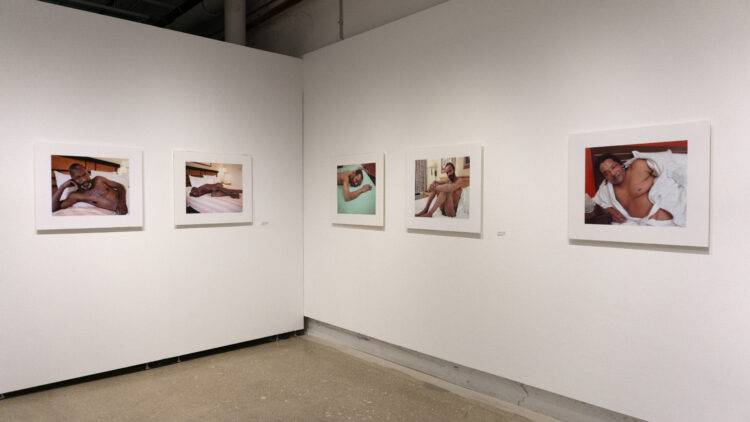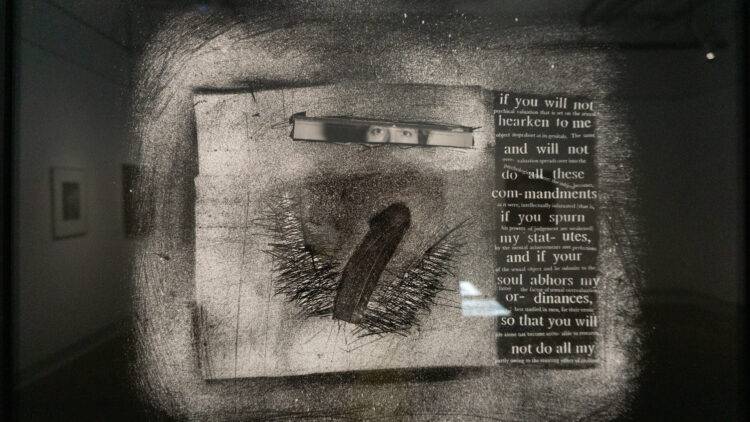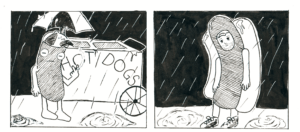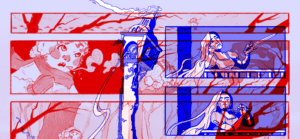“I’m much more interested in putting work out there and getting a response — whether positive or negative — and it’s very often the latter.”
This is part of the artist statement Barbara DeGenevieve wrote for “The Panhandler Project,” a piece in her new retrospective, “In Your Face,” at the School of the Art Institute of Chicago Galleries.
DeGenevieve, who died in 2014, was an artist and educator. Her practice consisted of photo, video, and performance work, lecturing on her art practice and topics of gender, sexuality, queerness, ethics, censorship, and pornography. In 1994, DeGenevieve brought her pedagogy to SAIC as a professor and the chair of the photography department.
It’s been 10 years since DeGenevieve’s death, and according to good friend and curator Alan Labb, her dying request was that her work be shown.
“It has taken several years to bring to fruition and has required the dedication of a community of colleagues, friends, former students, and current students who never had the chance to meet Barbara,” said Labb.

The work chronicles decades of DeGenevieve’s career, from 1978 to 2012. The gallery space is littered with content warnings paired with quotes from DeGenevieve sharing her intent behind various pieces. The work, multimedia in nature but often rooted in photography, explores controversial (and often political) conventions of sex, sexuality, gender, and pornography. Much of the work featured in “In Your Face” includes nudity, as well as salacious and religious text.
The opening reception of “In Your Face” drew in a wide range of viewers. A large part of the audience included coworkers, friends, and former students of DeGenevieve. Among the crowd, too, were students and other viewers unfamiliar with DeGenevieve or her body of work. Understanding that DeGenevieve has been labeled as a “transgressive” artist for most of her career due to her subject matter, there is undoubtedly tension and conversation about this revitalization.
The most divisive work of the reception was “The Panhandler Project.” The piece is a series of photos and two videos documenting the encounter between DeGenevieve and five unhoused Black men whom she has photographed nude in various poses. Conversation around this piece always seemed to make its way back to the ethics of the project.
This was such the case that in a symposium presented the following day, a panel, titled “The Panhandler Project and Interclass Contact,” was dedicated entirely to examining the discourse of the project as it stands from then to now. Along with questions of race, exploitation, and agency, viewers unfamiliar with DeGenevieve’s work began to question the importance of who is behind the camera.
“When you think about photography, the first thing you think about is access and [who] gets access to what,” Ceninye Harris (BFA 2025) said. Harris added that he has seen other artists, specifically artists of color, who have made similar work around the same time period. He considers that what makes DeGenevieve’s work more pertinent than others is her heightened access.
Annikah Idovia Godard (BA VCS 2026) had similar questions.
“Why do [the AIC as an institution and DeGenevieve] feel it’s their responsibility to start this conversation with [African American positionality] that’s not related to them at all?” Godard said.
Xinlyu Wang (MFA FVNMA 2026) sees DeGeneieve’s oeuvre from a different perspective.
“Different cultures have very different reservations towards these thematics [and feminism],” said Wang. She added that while work like DeGenevieve’s may not be unique, its presentation across cultures is what is important.
Then there were questions about whether DeGenevieve’s collection feels contemporary.
“It really holds together as a very strong body of work … more so than it did 20 years ago,” said Kitty Ross, friend of DeGenevieve and former full-time faculty at SAIC. Ross emphasized that with the political standing of the U.S., the work takes on new meaning in challenging the current landscape.
Not everyone was convinced that this was true. An SAIC Galleries employee, who asked not to be named for fear of losing their job, spoke to their discomfort with the piece.
“[“In Your face”] feels like a lazy last minute — let’s get people’s reactions … I feel like there is good work in this exhibition. There is work that can be discussed, but this has already been up. When was it? In 2006. So … are we still needing to have the same conversations, or should the conversations be getting a bit more complex?” said the employee.
Matthew Cortez Cortez, SITE curator, said he wondered if the complexity of DeGenevieve’s work is lost in the installation of “In Your Face.”
“In almost every single one of her pieces, there’s such a large amount of text … but I guess since it’s not the sexiest conversation, it’s not at the forefront,” Cortez said.
Cortez doesn’t deny that the more shocking pieces in the show have their merit but said he thought the written work may change how DeGenevieve is digested.
“I think it cements her more into poetics than anything — and leaves more leeway to what she’s doing and thinking and questioning,” Cortez said.
While the symposium acted as a forum to continue the many discussions and reflect on the exhibition, it was an act of remembrance. Across the panels, personal stories with DeGenevieve were shared by those who knew her and were inspired by her work. Some panelists were even brought to tears in their retelling. What became ever-more-clear was the fact that the “In Your Face” exhibition is a retrospective and memorial of her life.
With all the criticism, perhaps DeGenevieve’s legacy and pedagogy are still alive. “In Your Face” elicits a response. Whether DeGenevieve’s work remains contemporary many years later is up for debate, but her work pushed the boundaries throughout her time and now once again presses against the walls of an institution and the minds of newer generations.
“In Your Face” will run in the SAIC Galleries through Dec. 7 and will be paired with a student exhibition of those inspired by her pedagogy from Nov. 8 through Dec. 7.









